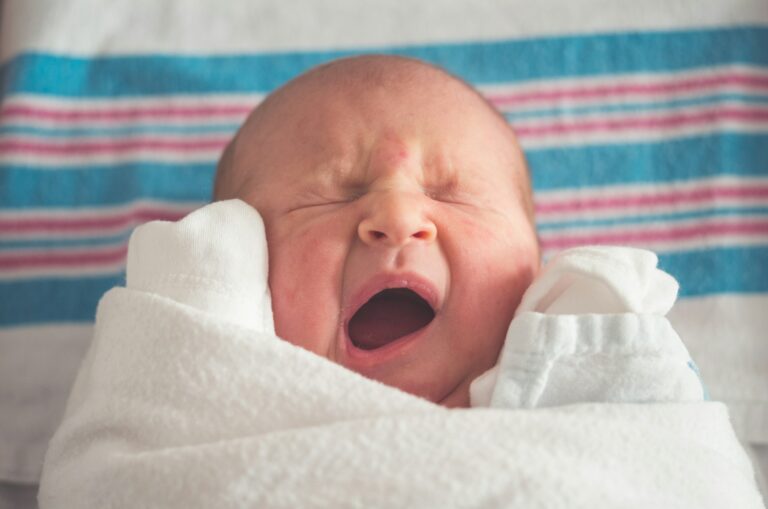Sometimes, a child’s warm forehead jolts a wave of concern through a parent’s mind. Is this just another “normal” fever in children, or could it be something alarming? The experience is almost universal: that wave of uncertainty, the silent calculation of temperature degrees, the urge to ease their distress immediately. “Fever in children” regularly prompts worried parents to ask: Is this dangerous? Should I medicate? When must I call the doctor? Your questions are valid, and the journey through such moments can be a maze. But understanding why fever occurs, its typical symptoms, the body’s intricate ways of responding, and practical home management can transform anxiety into empowered action. Here, you’ll find in-depth, science-based guidance—grounded, detailed, and relatable—on recognising, measuring, managing, and interpreting fever in children, along with practical tips, medical explanations, and thought-provoking perspectives.
Understanding fever in children: what parents need to know
What exactly happens when “fever in children” appears on your radar? The body, driven by the brain’s hypothalamus, hits the temperature “reset” button, nudging body heat above 100.4°F (38°C)—considered the clinical threshold for fever in children—in response to signals called cytokines. These chemical couriers surge in the presence of infection, making the body a much less comfortable place for viruses and bacteria. Contrary to popular belief, such fever isn’t the enemy. It is, in most cases, a shield: part of a carefully orchestrated immune response. Viral agents—a child fever cause—like influenza, seasonal flu, or COVID-19, and sometimes, bacterial offenders such as strep, can set the process in motion. You might also see a spike after a vaccination, or if a child is overdressed or exposed to hot climates, leading their body to struggle with heat regulation.
What’s truly striking is that “fever in children” doesn’t obey a strict schedule. Mornings can bring cooler readings, while evenings creep higher. And yet, it’s rarely just about the thermometer. Parents, have you noticed that how your child behaves—their energy, their level of alertness—often tells more than any number?
Recognising symptoms and measuring fever in children
Consider this: shivering, flushed cheeks, clinginess or sudden tiredness—these are the body’s visible messengers. Your child might shun food, or grow unusually irritable or droopy. If they also cough, have a headache, muscle ache or even a rash, pay close attention. These are not merely random complaints; they are the language of the immune system, asking you to observe with care.
When that familiar touch-the-forehead instinct kicks in, what next? Reaching for a digital thermometer is your best bet. For infants under one year, the gold standard is the rectal route, or, less invasively, a temporal artery thermometer for a quick sweep across the forehead. As children grow, ear (tympanic) or oral readings work well. Precision matters: always check temperature when your child is calm and at rest for accuracy.
But tool selection isn’t where your attention ends—consistent technique is vital. If you log the readings, along with your child’s symptoms and mood throughout the day, patterns emerge that can be vital for informed discussions with your healthcare provider, especially if symptoms linger or new warning signs appear.
The science behind fever in children: immune defence at work
A “fever in children” is more than a simple spike in body temperature—it’s the tip of the immunological iceberg. Once foreign microbes breach initial defences, white blood cells rally, releasing inflammatory signals that command the hypothalamus to conserve and raise body heat. Vasoconstriction (tightening of blood vessels), muscle shivering, and activation of macrophages amplify this defence mechanism. This temporary discomfort is meant to slow the invaders’ progress, giving the child’s immune cells a vital upper hand.
Mostly, your little one will pick up a viral infection—perhaps the common cold or a mild flu. These typically resolve without antibiotics. Bacterial infections, less frequent but often more severe, may warrant antibiotics or direct medical oversight. There’s nuance here: after routine immunisations, mild fever is an expected (and, in some sense, reassuring) sign that the body is building immunity. Rarely, more obscure culprits like autoimmune conditions or heatstroke are to blame, and it’s the context—associated symptoms, your child’s overall condition—that helps draw the lines between benign and worrisome.
Interpreting fever and what the thermometer really means
Does every fever in children call for urgent action? Not at all. It’s all about the overall clinical picture. For newborns and babies younger than three months, a rectal temperature of 100.4°F (38°C) is enough to warrant a doctor’s consultation—these little ones lack mature immune defences, and subtlety can mask danger. For older children, look for how your child behaves beyond the number. If fever sticks around beyond three days, returns after a short break, or is paired with new, concerning symptoms like drowsiness, breathing difficulty, dehydration signs (dry mouth, scanty urine, no tears), or persistent vomiting, reach out for expert help.
Why stress about tracking the readings? Fever patterns—spiking highs, persistent plateaus—provide essential context. A single reading can mislead; a trend tells the story.
Home management of fever: supporting comfort and recovery
Not every fever in children demands aggressive treatment. Your child’s comfort—hydration, rest, and supportive measures—outweighs any blind pursuit of normalising temperature.
Non-medical strategies for comfort
- Offer oral fluids liberally—water, breast milk, oral rehydration solutions (especially during viral infections accompanied by vomiting or diarrhoea).
- Dress your child in lightweight clothing—think loosely woven cotton during hot weather—to allow heat to dissipate.
- Ensure the room is well-ventilated but not cold (target 18°C to 20°C).
- Skip cold sponging or sudden baths: these can trigger shivering, leading to discomfort or unintended temperature spikes.
When to consider medication
If your young one appears unwell, fussy, or is struggling to rest, medication can help. Acetaminophen (paracetamol), dosed appropriately (60 mg/kg/day in 4–6 doses), is a safe and effective first-line. For children older than three months, ibuprofen (20 mg/kg/day in 4 doses) provides potent relief, especially for those with coexisting inflammation (joint or throat pain). Ketoprofen is an option from six months, but never mix different anti-inflammatory drugs. Avoid aspirin due to the rare but dangerous Reye’s syndrome—particularly if infection by viral agents, such as influenza or chickenpox, is suspected.
Medication is not mandatory for every fever in children. If your child remains playful or alert despite the fever, comfort measures suffice. Let their behaviour, not just the number, guide you. If unsure—or if your child faces discomfort beyond home treatment’s reach—the wisdom of a paediatrician is invaluable.
When does a fever in children demand medical attention?
There is wisdom in knowing when to pause and seek help. The very young—infants under three months with any fever—require prompt medical review. For older children, warning signs take centre stage:
- High fever persisting beyond three days.
- Repeated vomiting or refusal to drink.
- Breathing difficulties: rapid pace, indrawing at the chest, blue lips or nails.
- Unresponsiveness or continuous sleepiness.
- Convulsions/seizures—especially if prolonged or recurrent.
- Signs of dehydration— dry mouth, absence of tears, pronounced sleepiness, scanty urine.
- Rashes that do not blanch (turn white) with pressure.
Unusual drowsiness, a stiff neck, pronounced light sensitivity, or a bulging (or sunken) fontanelle in infants are all red flags. In these situations, hesitation is not your ally—trust instincts, and consult your doctor immediately.
Serious complications and special scenarios
Parents often fear the spectre of febrile seizures—the dramatic, brief convulsions some children experience with rapid temperature rises (usually between 6 months and 6 years). Though deeply alarming, these episodes are rarely dangerous or long-lasting. Lay your child safely on their side, keep the airway clear, and never place anything in their mouth. Call for medical help if the seizure stretches beyond five minutes or if recovery feels sluggish.
Dehydration—a danger that sneaks up during stubborn fevers, especially with vomiting or diarrhoea—demands vigilance. Look for sunken eyes, dry lips, diminished urination. Encourage fluids frequently; medical intervention is required if there’s no improvement.
Majors threats—meningitis, sepsis—are rare, but require immediate recognition. Sudden, persistent lethargy, a non-fading rash, trouble breathing, and pronounced sensitivity to light demand emergency care.
Preventing fever in children and promoting resilience
It’s easy to feel powerless, but some simple actions offer strong protection. Rigorous hand hygiene—both for caregivers and children—drastically reduces infections. Clean living and play spaces, limiting exposure to sick contacts, and encouraging balanced meals, restful sleep, and ample physical activity build a robust immune foundation. Minimising exposure to smoke or polluted air further shields vulnerable little airways.
Fever in children: demystifying common myths
- All fevers are dangerous. In reality, fever in children is often just a sign of immune defence—very high fevers (above 107.6°F/42°C) are exceptionally rare.
- Fever reducers must always be used. Unless your child is truly uncomfortable, prioritise comfort and behaviour over numbers.
- Teething causes high fever. Teething is uncomfortable and might cause minor temperature rises, but real “fever in children” nearly always signals infection.
- Cold baths or fans are useful. Such practices can worsen discomfort—skip them in favour of gentle comfort.
- Fever that doesn’t come down with medicines is dangerous. Some infections naturally cause persistent fever; accompanying symptoms and the child’s state matter more.
Let reason guide action, and steer clear of fixing on the thermometer figure alone.
Key takeaways
- Fever in children often signals an immune defence, not a disaster.
- Your child’s comfort, fluid intake, and general behaviour matter more than timer precision.
- Accurate, age-appropriate temperature measurement guides best care.
- Most cases of fever in children resolve smoothly with home care and supportive strategies.
- Warning signs—persistent high fever, trouble breathing, dehydration, unresponsiveness—require professional insight, quickly.
- Trusted, science-backed advice and easy-to-use tools, like the Heloa application, stand ready for guidance and tailored child health questionnaires.
Questions Parents Ask
How long does a typical fever last in children?
Most fevers in children related to viral infections settle down within three to four days. Sometimes, temperature may yo-yo for a while before settling completely. If fever hangs on beyond 72 hours, or dips and returns, it’s a good step to check with your doctor—especially if other symptoms show up alongside.
Can teething cause a fever in my child?
Teething might bring about mild irritability, drooling, or a barely-there shift in body warmth, but true fever in children (above 100.4°F/38°C) nearly always links back to infections rather than erupting teeth. If your child looks especially unwell or the fever stubbornly stays, monitor closely and consult a professional.
Is it safe to let my child play or go outside if they have a fever?
A gentle question with a nuanced answer. Light rest is ideal, yet, children’s spirits are not so easily curbed. If your child rallies, remains bright-eyed and only mildly affected, quiet indoor play can be fine. However, vigorous activity, and any exposure to high temperatures, should be off the table until they’re fever-free for at least a day. Always let their energy (and your parental instinct) guide the rhythm of recovery.
Further reading:









